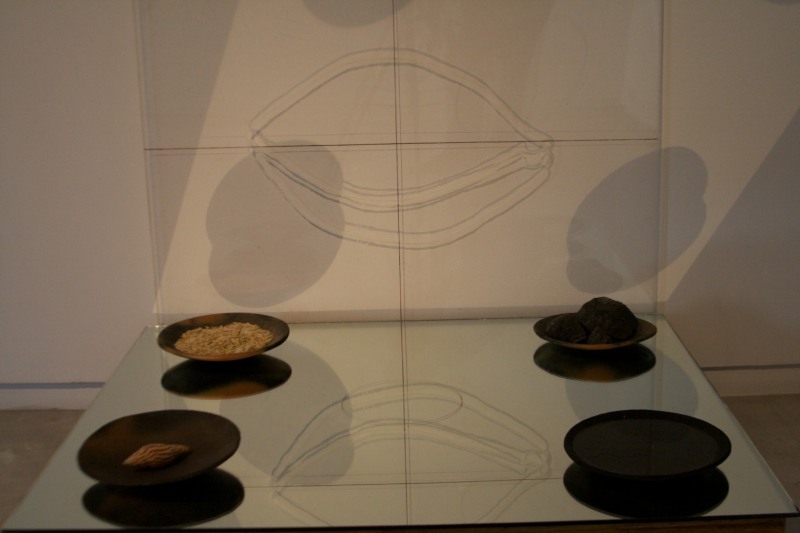
In an essay titled, "Urvasi and Pururavas", the early Marxist historian DD Kosambi wrote that terracotta pots with decorations of eyes or necklaces represent mother goddesses. The word denoting the pot, kumha, was interchangeable with a female's womb: for example, a Rig Vedic hymn suggests that sage Vashista was born of the seed of Mitra-Varuna poured into a jar or kumbha.
This use of the pot as an allegory for women's bodies and craft has been renewed by artist Rummana Hussain in her collection, Fortitude and Fragments. These works date back to 1993-94, the time of the communal riots that followed the demolition of the Babri Masjid in Ayodhya. As an artist and a Muslim woman, Hussain was forced out of a painterly reverie, filled with magical figures and grotesque angels, to produce installations of subdued brutality. As Ayodha flashed back into the public mind after last month's judgment from the Allahabad High Court, Hussain's fragments at Talwar Gallery resonate with the fortitude of memory. Her sombre, spare installations appear like ruptures on women's bodies. Hussain principally uses just pots, soil and mirrors in her work. An installation called "Resonance" is made of four terracotta pots holding water, coal, grain and shells on a mirrored panel placed on a cement slab in the gallery. Another domed mirror is installed onto the wall. Symbolism pours out of the objects; the broken pot could be the broken dome, or the broken women, and your own reflected, distorted image becomes implicated in the installation and the violence it refers to. In another work, "Unearthed", the terracotta pot lies splintered on a pile of bricks, evoking the bricks collected and consecrated for the construction of the avenging mandir.
"Indigo" is a clothesline installation with a string of indigo-stained papers. They are tattered as if the perfume of life has been wrung out of them: a comment on the drudgery that the domestic ritual of clothes washing must induce in women. A gypsum board titled "Tunnel Echoes" bears the image of a vagina smeared with ochre, imitating bloodstains. It also seems to suggest a delta surrounded by a network of rivers. All of Hussain's works seem to connect women with natural elements like water and earth. Another work titled, "Sequence and Change" has a bicycle on a strip of sand strewn with shattered mirrors. The bicycle is without a pedal and seems to represent arrested motion, mocking us mutely with its immobility.
-Shweta Upadhyay